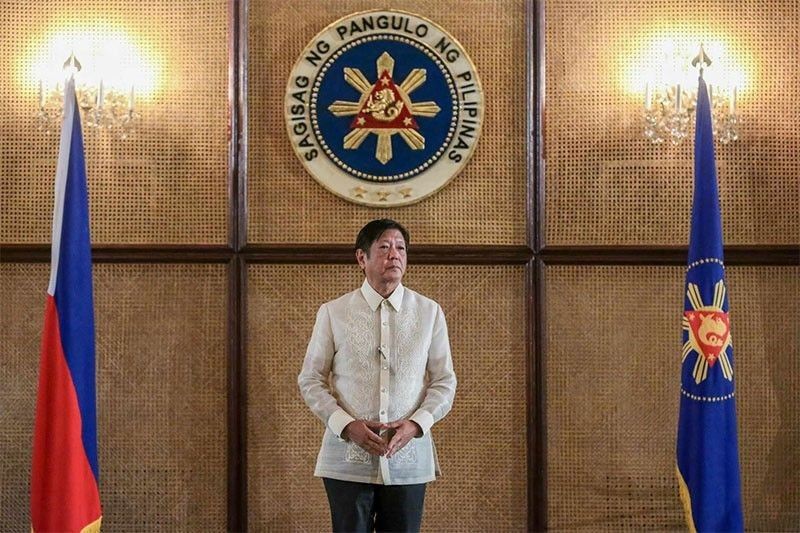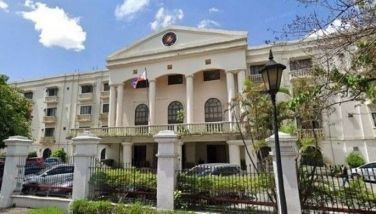Marcos urged to delay release of budget ‘pork’ Until after 2025 midterm polls

MANILA, Philippines — To prevent the use of billions in public funds from being used by politicians for the 2025 elections, President Marcos can classify all Congress-introduced amendments in the 2025 General Appropriations Act (GAA) as “for later release” or FLR, former Senate president Franklin Drilon said yesterday.
In a statement, Drilon made the proposal as he noted that Marcos’ vetoes of some items in the 2025 national budget were largely “cosmetic,” barely touching the “pork barrels” of legislators, principally lodged in the bloated appropriation for the Department of Public Works and Highways (DPWH).
“In my opinion, the pork barrel of the congressmen has not been fixed. There is still a big pork barrel left in the GAA,” Drilon said in a radio interview. “There is not much change. The pork barrel is still big in the DPWH.”
“The 2025 budget is considered an election-year budget. Hence, we must be vigilant. The budget should not be a tool in aid of the 2025 elections,” Drilon said.
Delaying the release of the controversial appropriations, he said, could “prevent the budget from being perceived as a tool for election-related spending.”
He said this would ensure compliance with the Omnibus Election Code, which prohibits the release, disbursement or expenditure of public funds for public works, as well as the delivery of construction materials, starting March 28 or 45 days before election day.
The FLR mechanism is a practice implemented by the Department of Budget and Management during the previous administration. Under this approach, Congress-introduced amendments that are not part of the President’s National Expenditure Program are classified as FLR, requiring compliance with specific conditions before funds are released.
By subjecting Congress-introduced amendments to the FLR classification, Drilon argues, the public will be assured that government funds will not be used as leverage for election purposes.
Drilon tagged the President’s vetoing of P168 billion in Unprogrammed Fund (UF) allocations as “cosmetic,” since these standby appropriations lack funding unless additional revenues are generated.
“The veto of unprogrammed activities is a cosmetic, more than anything else, as the unprogrammed activities and projects are not supported by programmed revenues,” Drion had earlier said.
While P26 billion worth of DPWH projects were vetoed, leaving a total of P263.9 billion in congressional insertions, Drilon said the overall amount of insertions across the budget remains significant at P347 billion.
With only P26 billion reverted to the Treasury, that means only that amount is available to restore the funding of de-funded projects in the National Expenditure Program (NEP), said Drilon, adding that this leaves key programs like the P74.4-billion subsidy for PhilHealth and the P50 billion for the 4Ps unlikely to be restored.
ODA eyed for DA budget shortfall
Funding from Official Development Assistance (ODA) will augment the Department of Agriculture (DA)’s 2025 budget of P237.4 billion after President Marcos formally signed the P6.326-trillion national budget, Agriculture Secretary Francisco Tiu Laurel Jr. said yesterday.
“I am happy with the support of the President. In any case, we just have to work within our means. In general, we also have a lot of ODA coming in to augment whatever shortfall we might need to do our job,” Tiu Laurel said.
The ODA, as defined in Republic Act 8182 or ODA Act of 1996, is a loan or a grant administered to promote sustainable social and economic development and welfare of the Philippines.
Meanwhile, the DA is among the departments with the largest allocation for this year.
“The good thing, I am looking forward to implementing all projects (this year), from cold storages, to solar irrigation, change of planting calendar, increasing planting intensity to 2.5 from 1.8, so I think we can produce more and stabilize prices,” he added.
At the same time, Tiu Laurel said the DA is serious in implementing the change in planting calendar amid the impact of successive typhoons in the agriculture sector in 2024.
Tiu Laurel added that the DA, through the help of the Landbank of the Philippines and Development Bank of the Philippines (DBP), will allocate a combined funding of P200 million to finance the Agri-Puhunan Program.
DILG budget, rural electrification
“It is a condition of the Agri-Puhunan that farmer will be given P60,000, P28,000 for the inputs, including land preparation, harvest and transport and P32,000, P8,000 monthly support but the conditions include you need to change planting calendar,” Tiu Laurel noted, adding that the DA targets to cover at least 100,000 farmers in the Agri-Puhunan program.
Meanwhile, the Department of the Interior and Local Government (DILG) and its nine attached agencies has committed to managing its budget for 2025 with responsibility following its recent approval under Republic Act 12116, also known as the 2025 General Appropriations Act.
With a budget allocation of P279.1 billion – the fourth-largest among government agencies – DILG Secretary Jonvic Remulla expressed the commitment to fulfilling its mandate to foster local governance excellence, promote peace and order and enhance public safety.
“We assure the President, Congress and the public of our commitment to utilize our budget responsibly, judiciously and prudently in support of the administration’s agenda for prosperity by fulfilling the needs and aspirations of the Filipino people,” Remulla said.
For his part, Sen. Sherwin Gatchalian said the approved 2025 GAA has enough funding for the government’s rural electrification program, as the National Electrification Administration (NEA) was allotted P1.87 billion in the national budget this year.
Gatchalian said this funding will enable the NEA to provide electricity to 22,000 rural households. There are an estimated 4.214 million households nationwide that still have no electricity as of June 2023, Gatchalian said.
“Electricity is necessary for business to thrive in far-flung areas, which in turn will provide jobs and improve the economy,” Gatchalian said. “We hope that the budget allocation for the NEA for 2025 would help push the rural electrification program to its completion in the next couple of years,” he added.
Electrification in the country stood at 89 percent in 2023 and 91 percent in 2024. Based on the five-year electrification plan, the government aims to increase coverage to 94 percent in 2025, 97 percent in 2026 and achieve 100 percent in 2027.
As of August 2024, NEA energized 1,153 sitios using government subsidy provided the previous year. – Bella Cariaso, Christine Boton, Marc Jayson Cayabyab
- Latest
- Trending

























